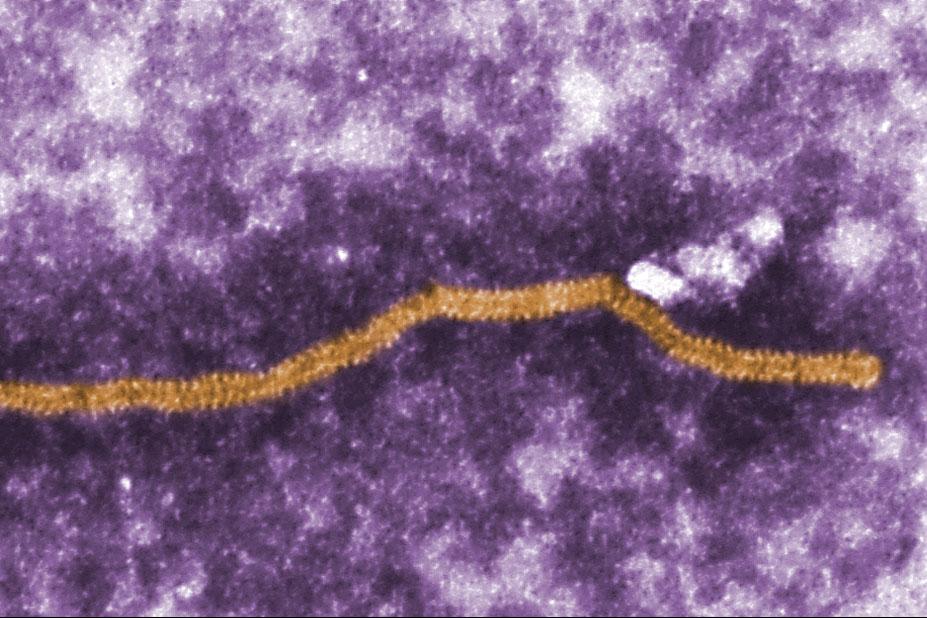The first and most severe Nipah virus (NiV) outbreak occurred in Malaysia and Singapore from 1998 to 1999, resulting in nearly 300 human cases and over 100 fatalities.
This outbreak, caused by pig-to-human transmission, was controlled by culling nearly half the Malaysian pig population, leading to significant economic losses and long-term damage to the pig industry. Despite the threat posed by NiV, no vaccines are currently available. The rare and sporadic nature of NiV outbreaks in pigs limits commercial interest in vaccine development.
To address this, we are developing a bivalent vaccine for pigs. A NiV vaccine for pigs could be deployed in response to an outbreak situation, or routinely used to reduce the risk of NiV outbreaks occurring.
In a UKVN ‘Vaccines for epidemic diseases: Readiness for clinical development and regulatory submission’ competition funded project, we aimed to address both scenarios by developing a bivalent vaccine that can provide immunity after a single immunisation.
Live attenuated pseudorabies virus (PrV) vaccines are highly effective vaccines that can be engineered to express antigens from other pathogens. We constructed a PrV vaccine that produces soluble forms of both the NiV F and G glycoproteins. The NiV-neutralising antibody response stimulated by prime-boost vaccination was comparable to those seen with vaccine candidates we had shown to be protective in pigs. The inclusion of the NiV glycoproteins into the PrV vaccine did not hinder PrV-specific immune responses.
Overall, the data suggested that the bivalent PrV-NiV vaccine candidate would likely provide protection against both viruses, though two doses may be required.
Aims and objectives
Our aim is to improve the bivalent PrV-NiV vaccine so that it may provide dual protection after a single immunisation.
We will achieve this by engineering the NiV glycoproteins to be expressed on the cell surface, which should enhance antibody responses.
We will compare the new and original vaccines to determine any improvements in immunogenicity. The best candidate will then be tested for its ability to protect pigs against both PrV and NiV.
Current PrV vaccines need to be kept refrigerated, which can be challenging in tropical regions at risk from NiV. To address this, we will evaluate stabilising the vaccine by fine coating it with silica.
Since NiV infection restricts the ability of countries to trade pigs or pig products, it is essential that any NiV vaccine includes a companion test to enable the discrimination of infected from vaccinated pigs. We have established a lab-based assay for this purpose and will translate this to a rapid ‘penside’ lateral flow test.
Outputs and impact
- Bivalent vaccine: Single-dose protection against both NiV and PrV.
- Engineered glycoproteins: Enhanced antibody responses.
- Silica-coated vaccine: Thermostability in tropical regions.
- Rapid penside test: Differentiation of infected from vaccinated pigs.
- Economic and public health benefits: Reduced risk of NiV outbreaks risk in Asian pigs, which will support the pig industries at risk, and protect human health.
Collaborators
Dr Michael Francis (BioVacc Consulting Ltd)
Dr Walter Fuchs (Friedrich-Loeffler-Institute)
Dr Barbara Klupp (Friedrich-Loeffler-Institute)
Dr Anne Balkema-Buschmann (Friedrich-Loeffler-Institute)
Dr Asel Sartbaeva (EnsiliTech)
Dr Aswin Doekhie (EnsiliTech)
Jane Shepard (EnsiliTech)
Dr Alison Wakeham (Global Access Diagnostics)
Andrew Bentham (Global Access Diagnostics)





